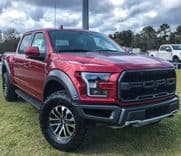How the New Generation of Hybrid SUVs Is Redefining Fuel Efficiency and Safety for U.S. Drivers
The latest hybrid SUVs are challenging long-held ideas about what power, performance, and protection can look like on American roads. Blending advanced fuel-saving technologies with next-generation driver-assist and safety systems, these vehicles represent the peak of automotive evolution. In a market where sustainability meets everyday practicality, innovation is no longer optional — it’s expected.
The Evolution of Hybrid SUV Technology
Just over a decade ago, hybrids were viewed as modest, eco-conscious options with limited appeal to performance-driven drivers. Fast-forward to today, and the hybrid SUV has become a category-defining segment — offering not only remarkable mileage but also advanced powertrains, real-time data integration, and safety intelligence powered by AI.
Manufacturers like Toyota, Ford, Honda, and Hyundai have invested billions into refining parallel hybrid and plug-in hybrid systems. These architectures blend internal combustion engines with electric motors, optimizing the balance between power and efficiency.
Modern hybrids now feature regenerative braking, predictive energy management, and even thermal optimization algorithms that ensure maximum energy use under different conditions. In some cases, onboard computers analyze driving habits and traffic conditions to adjust the power flow between engine and battery in milliseconds.
What’s Behind the New Era of Fuel Efficiency
Fuel efficiency in the latest hybrid SUVs goes far beyond just miles per gallon. It’s about smart energy orchestration.
Here are some of the most impactful innovations:
- Predictive Drive Systems: By analyzing GPS data, elevation, and traffic flow, predictive drive systems prepare the powertrain for changes ahead — such as switching to electric mode before entering low-speed zones or hills.
- Adaptive Power Split Devices: These components precisely control when the vehicle uses gasoline power or electric assistance, maximizing both torque and fuel savings.
- Lightweight Materials: Advanced alloys and carbon composites reduce vehicle weight by up to 10%, improving efficiency without compromising structure.
- Aerodynamic Design: Active grille shutters, low-drag body shapes, and hidden underbody panels reduce air resistance, which is crucial for highway driving efficiency.
For U.S. drivers — especially those in suburban and cross-state commuting environments — these features translate into real-world savings, often extending fuel economy by 20–30% over comparable gasoline models.
Safety Reimagined: AI-Driven Protection Systems
While fuel economy drives purchasing decisions, safety innovations often seal the deal. The latest hybrid SUVs are packed with advanced safety suites that leverage AI, radar, and sensor fusion to anticipate and mitigate potential collisions.
Some leading examples include:
- Adaptive Cruise with Predictive Braking: Combines radar and camera data to maintain safe following distances while adjusting for upcoming traffic changes.
- Cross-Traffic and Blind Spot Alert: Uses radar arrays to detect side or rear hazards — invaluable during urban driving or highway merges.
- Driver Monitoring Systems: Cameras track driver attention and fatigue, issuing alerts when signs of drowsiness are detected.
- Collision Avoidance AI: By fusing multiple sensor inputs, these systems can identify pedestrian movement, lane deviation, or approaching objects — responding faster than human reaction time.
According to recent NHTSA data, vehicles with integrated driver-assist systems reduce collision rates by over 27%, and those with active lane assistance report up to 40% fewer roadway departure incidents.

